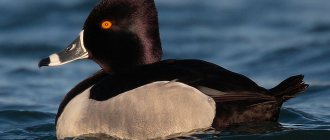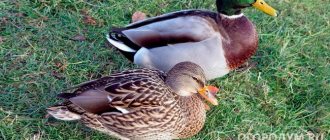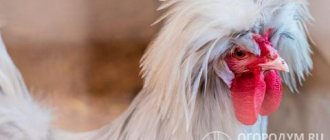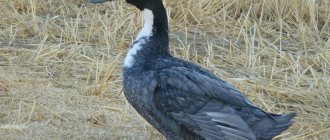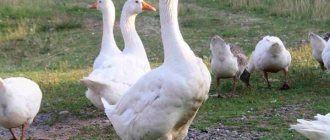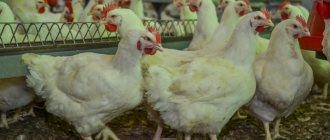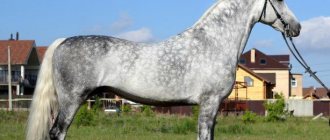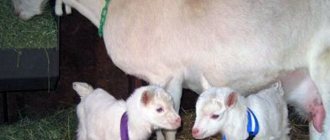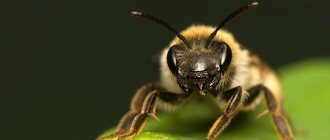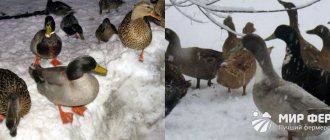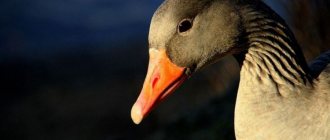Home » Articles about ducks » Tufted ducks
The main distinguishing feature of tufted ducks is the presence on their heads of a growth covered with long thin feathers that form something like a luxurious hat or crown. This decoration given by nature looks very original. This type of bird is valued mainly for its beautiful appearance. Although birds belonging to this group cannot boast of high productivity, their meat has excellent taste.
History of breeding of tufted ducks
It is impossible to say with complete certainty when tufted ducks appeared. Scientists believe that such individuals first appeared when the Chinese corydalis crossed with European poultry. For the first time, representatives of this species were brought to Europe (Holland) from Southeast Asia about 3 hundred years ago.
Important!
The egg production of tufted ducks can reach 120 eggs/year, while wild tufted ducks produce no more than 20 eggs per year.
For a long time, tufted ducks were bred in Holland, which is why they are often called “Dutch” ducks. In the 18th-19th centuries, corydalis began to spread throughout European countries. At the same time, new varieties of the crested type appeared.
Photo of Ukrainian Crested Duck
Genetics
The development of a spherical crest on the back of the head from short down feathers in Dutch ducks is determined by the presence of the crest gene in their genotype. In the homozygous state, this gene causes the death of the embryo while still in the egg. Therefore, all crested individuals are heterozygous for this trait, that is, they carry only one copy of the lethal allele of this gene. Homozygous embryos (with two copies of the lethal allele) are produced in a quarter of the offspring from a cross between two crested individuals, inheriting the lethal allele from both parents. Accordingly, in order to obtain crested offspring, but avoid segregation of homozygotes, duck breeders mate a crested individual with a crestless one, as a result of which the offspring are split according to this trait in a 1:1 ratio. Half of the ducklings are tufted, and half are without a tuft.
Ukrainian Crested Ducks
Also check out these articles
- Varieties of peonies with descriptions and photos
- Winter rye
- Agricultural automation: what should you know about seeders?
- Planting grapes in spring with seedlings and cuttings
Ukrainian crested ducks are a type of crested duck, which, first of all, is distinguished by its large body weight - females weigh 3 kg, males weigh 3.5 kg. But the breed also has some other features:
- high egg production;
- precocity;
- birds love to fly.
Among the disadvantages, it can be noted that birds are prone to obesity if given a lot of food. And if the bird begins to gain fat quickly, the taste of the meat deteriorates.
Important!
To prevent individuals of the Ukrainian breed from flying far, they need to trim the feathers on their wings.
The physique is powerful. The neck is slightly curved. Legs are strong and set close. The head is almost round. The eyes are dark brown. The beak is small, raised. The main color of the feather is white, brown or brown-gray. There is a scaly pattern on the chest, and on the wings, back and neck the plumage is lighter with a pronounced horizontal stripe of a contrasting color.
Description and characteristics
Ducks that have a voluminous cap or crown of long, thin feathers form a breed group. All breeds that are part of the corydalis group are distinguished by similar external characteristics:
- Dimensions. Corydalis are small in size compared to Mulards or other meat breeds. The weight of the bird, depending on the variety, is 2-3 kg (for ducks) or 2.5-3.5 kg (for drakes).
- Body type. Despite their small size, crested birds are distinguished by well-developed muscles and dense build. The duck's body is elongated, its back is wide and long, and its chest is slightly convex and rounded. The neck of the corydalis is short and protrudes slightly forward. The beak is of medium or short length and oblong in shape. In some breeds it is slightly raised. The legs of ducks are short and powerful; the length and appearance of the wings depend on the type of breed.
- Plumage. The feathers of the corydalis are thick, dense and hard to the touch. The color of the bird depends on the parental genotypes. Common to the entire breed group is a direct relationship between the color intensity of the feathers and beak: ducks with dark colors have a brighter and darker beak.
- Manifestation of a gene in phenotype. The gene that determines the presence of a crest, the main breed characteristic, is manifested in the phenotype (appearance) of the duck in only 80% of cases. If one of the parents does not have a crest, the hatched ducklings will not have this feature.
- Productivity. The productivity of ducks is low: they can grow quickly, but the weight of an adult does not exceed 3-3.5 kg. Corydalis are often raised for their eggs. The productivity of birds inversely depends on the size of the crest: ducks with large feathered crowns are raised primarily for decorative purposes.
The Crested Duck is active, non-aggressive and mobile.
Russian Crested Duck
Photo of Russian Crested Duck
The Russian Corydalis differs from other varieties in some features:
- high egg production throughout the whole year;
- unpretentiousness;
- developed maternal instinct;
- peacefulness, cleanliness;
- individuals can live without a body of water;
- activity.
Among the shortcomings, it is worth highlighting the low meat quality.
The Russian Crested Duck grows up to 2 kg on average. Males can grow up to 2.5 kg. The bird's body is sinewy and correctly built. The chest is protruded forward, the belly is lush, especially in females, there is no fold. The tail is wide, not long. The wings are crossed, long, tightly pressed to the body. The head is elongated, not set high - the neck is short and arched. The eyes are dark brown. The plumage of ducks of this breed can be different (white, motley, with dark stripes, etc.).
Popular meat varieties
Large breeds of ducks, which are bred for slaughter, are most in demand among farmers. These birds have very tender and tasty meat, which is considered a real delicacy. Maintaining even a large population of several dozen individuals is not too expensive, because waterfowl are omnivores, with good feeding they grow quickly and gain weight, so young animals can be slaughtered after 97-12 months.
Peking ducks
The leader in popularity is the Beijing variety
It combines all sorts of advantages that poultry farmers primarily pay attention to. Representatives of this breed extremely quickly reach a solid meat weight - 1.5-2 months after hatching
After three months, the birds weigh 3.6-4 kg and can be slaughtered. And this is even with a standard diet - ducks are not whimsical in this regard, regular feed is enough for them.
They also do not require any special conditions of detention, which is also a significant advantage. At the same time, the females also lay well - a little more than a hundred fairly large (90 g) eggs annually. The external characteristics of the Pekin are completely white (without markings) vestments, legs and beak of orange color.
Beijing variety
Black white-breasted duck
An interesting meat cross is the Black White-breasted ducks, obtained by scientists from the Ukrainian Poultry Research Institute, who combined the genes of the three largest varieties: Khaki Campbell, White Russian and Pekin. The result was a hybrid with meat of high fat content and solid weight indicators - 4-3.8 kg. The appearance of the birds is quite remarkable: a dense body with an open chest, powerful wings and back, and muscular legs.
The color is almost completely black, and there is a large white spot on the front of the body. Representatives of this breed grow quickly and can go to slaughter at the age of 3-4 months. The advantages include the high survival rate of young livestock - 96 individuals out of 100, omnivorousness and good immunity. A significant drawback is the low hatching percentage - 65 out of 100.
Representatives of the Black White-breasted variety
Mulards
The Mulard species belongs to the broiler class and is an artificially bred hybrid (based on the Peking and Musk variety). These are record holders among meat varieties, because young animals reach the 4 kg mark at three months of age, but do not stop there and continue to grow. The peak level is 6 and even 7 kilograms.
This species does not lay eggs well, and the hatching rate of ducklings is extremely low. This is a meat variety that can only be kept for the sole purpose of being slaughtered for meat.
Mulard ducks
Muscovy duck
Representatives of the Musk breed, also known as Indo-ducks, are endowed with a specific smell, since South America, the habitat of aboriginal Indian tribes, is considered their homeland. They are also very large birds, gaining weight up to 6 kg upon reaching sexual maturity.
It is better to slaughter young animals after 3 months - before the first molt, otherwise the meat may become tough. This species can be easily recognized by the characteristic pink warty growths on the beak and the adjacent part of the head. Indo-duck meat is dietary and contains very little fat, unlike other varieties.
Musk breed (Indochka)
Rouen duck
The Rouen variety is named after its place of origin, as it was developed in northern France. Breeders set out to create a meaty species with very high quality fillets that could be used in haute cuisine recipes.
In addition, when the calorie content of the diet increases, birds gain fat very quickly, which makes it possible to obtain from them extremely tender fillets with translucent fat, which is considered a special delicacy. The optimal weight for mature individuals is 5.3 kilograms.
Ducks from Rouen are famous for their variegated plumage, and the drakes have a bright emerald head and a white necklace.
Moscow white duck
The Russian breed, one of the most popular in our country, is the Moscow White. In appearance it resembles the Pekin, from which part of the genetic material for selection was borrowed. The second “donor” was the Khaki Campbell species. Individuals are quite large - 4.5 kilograms when reaching sexual maturity, and have tender, not fatty, but juicy and tasty meat.
This species is characterized by snow-white plumage without a hint of yellowness (which is characterized as culling) and a rich red beak color.
Moscow variety with white plumage
Bashkir Crested breed
We recommend reading our other articles
- Wintering of bees
- Seedless watermelon - the best varieties with descriptions
- Tomato variety Lady fingers
- Potato variety Lapot
Photo of Bashkir Crested Duck
This variety of corydalis differs:
- increased endurance;
- high egg production;
- unpretentiousness.
At the same time, the disadvantages include the fact that Bashkir ducks can only be kept near water bodies, otherwise productivity decreases and the appearance and quality of feathers deteriorate.
Important!
In terms of body weight, Bashkir crested ducks are inferior to Ukrainian and Russian species. Because of this, they are less popular and are bred mainly by fans of this breed.
The bird's physique is powerful and its bones are strong. The chest is protruded and covered with soft, dense feathers. Legs are strong and set wide. The bird is distinguished by beautiful, large wings. The neck is of medium length, rather thick. The color of the bird comes in several types: white, black-brown, gray, gray, brown. The main feature of the species is the bright patterns on the wings.
Final part
We looked at the details and were convinced that tufted ducks have an extremely attractive appearance. Those who strive to obtain a large amount of meat from breeding ducks will not like such birds. But for aesthetes with delicate taste and for people who want to please and surprise guests and neighbors, the Russian Crested is an ideal option.
The uniqueness and sophistication, recognition and brightness of these birds will add a touch of chic to any farm or private household.
- https://fermerok.info/poroda-utok-hohlataya
- https://7ogorod.ru/domashnyaya-ptica/hohlataa-utka.html
- https://fermoved.ru/utki/hohlatye.html
Tufted duck
Tufted duck
This breed is a wild variety of the Tufted Duck. Peculiarities:
- low productivity;
- high decorative qualities;
- birds love to fly;
- light weight, males - 1.2 kg, females - 1.1 kg.
Externally, birds are quite different from varieties of other species. The physique is elongated, knocked down. The eyes are yellow. The plumage throughout the body is dark, on the head it is purple, and there are white pockets on the sides. This bird has a large crest; the largest feathers hang from the back of the head.
Chinese Corydalis
Chinese Corydalis in an antique Chinese engraving
This is a wild tufted duck, which is also sometimes called the mottled shelduck. She belongs to an endangered species. Its main features are plumage. The feathers on the back are dark brown, while the belly, sides, neck and cheeks are white. The chest is black and green. The bird is bright, beautiful, and has a high decorative value.
Important!
The Chinese Crested Duck is a very good swimmer and feeds mostly from water bodies.
Keeping Tufted Ducks
Tufted ducks can also be kept in closed enclosures, but since they are an ornamental bird, they are usually bred in spacious ducklings, which are adjacent to equally large enclosures with ponds.
Tufted ducks need water
- Tufted ducks do not like crowding. There should be no more than 4 individuals per square meter of area. If there are more than 15 ducks in the room, then it is advisable to divide it into sections with special partitions.
- The room should be bright, with good ventilation, several light bulbs for additional lighting in winter. The most acceptable humidity for high productivity is 60-70%, temperature +16...+20 degrees. In winter it should not fall below +5 degrees Celsius.
- The bedding is made from hay, straw or sawdust, peat (can be combined). Change it when it gets dirty.
- The number or length of feeders should be sufficient for all birds. Approximately 15 cm of feeder is allocated for one adult.
- Not all tufted ducks need water, but it is still advisable to provide the bird with access to water, or at least a large trough of water so that the birds can splash around in it at will.
Feeding
You can feed corydalis with balanced feed intended for ducks, or with homemade mash and grain mixtures.
Duck feed may contain the following components:
- crushed grains of corn, barley and wheat;
- legumes;
- cakes of oil crops (rapeseed, sunflower, etc.);
- bran;
- yeast;
- green mass and silage (young nettle, alfalfa, steamed hay, etc.);
- vegetables (boiled potatoes, carrots, cabbage, beet pulp, yellow pumpkin);
- meat and bone and fish meal;
- cottage cheese (added to ducklings’ feed);
- gravel, coarse sand;
- ground eggshells, shells;
- salt (up to 0.2% of feed).
If there is an open reservoir nearby, part of the green mass in the diet consists of aquatic vegetation (duckweed, pondweed, etc.). Using pasture allows you to reduce food portions by 20%.
If there is no pond and the animals are kept in enclosures, food should be given in full. The number of meals can be up to 4 per day. 50% of the daily diet should be dry grain feed, and another 50% should be wet mash, including grains, bran, vegetable additives and yeast.
In winter, tufted ducks practically do not gain weight, but the amount of food cannot be reduced. In cold weather, bird food must include potatoes, hay, rot, fish or meat and bone meal and mineral supplements.
Breeding Features
Ducklings are born strong, with strong immunity.
Tufted ducks begin to lay eggs at 5-6 months. In a year they can lay about 120 eggs weighing 65-70 g. This type of duck can be bred either naturally or through an incubator. The chicks are born strong, with strong immunity. They grow very quickly, although breeders note that in winter the young animals slow down their development even with intensive feeding.
When breeding tufted ducks, individuals are sometimes born without a tuft. To ensure that the breed does not lose its species characteristics, only those individuals that have a crest should be left for breeding, and the rest should be discarded.
Care
Indian Runner Duck: description
Ducks are unpretentious in keeping. They feed on any food, preferably dry grasses and grains.
Important: you can arrange a small pool for the birds in the aviary, this will have a positive effect on the mood of the entire flock. Ducks will frolic in it, dive, and get food.
Duck housing must be clean and dry. Dirt and dampness cause discomfort to the bird and can cause illness. The floor of the poultry house should be cast concrete or lined with brick. This will prevent moisture and dirt from penetrating inside. The floor must be covered with bedding. Sawdust, hay or straw are used for it. Everything is sprinkled in an even layer 5-10 centimeters thick. The exit from the house leads to a fenced enclosure where the bird spends most of its time.
If there are ducklings in the house, there is an urgent need to maintain a high temperature. When breeding ducklings at home, it is necessary to have heating equipment, which is installed in the poultry house.
The ducklings are fed as soon as they hatch and dry out once every two hours. For food you need to prepare porridge from crushed boiled eggs mixed with grain. Fresh greens are also necessary for chicks - any fresh grass is used.
Important: to ensure that the chicks grow up healthy, you can give them cottage cheese soaked in whey.
